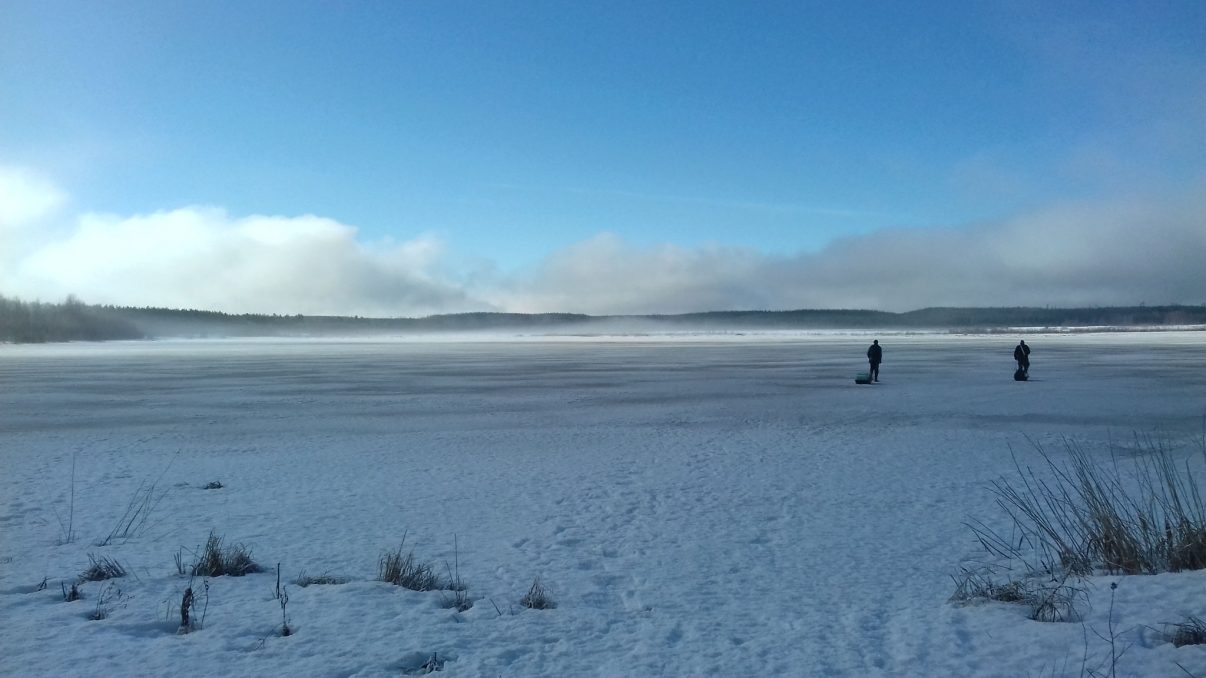
Rewilding and climate change – time to act
Today, Europe faces a choice. Do we continue to let climate change and biodiversity decline continue unchecked, or do we employ the most immediate and cost-effective solutions to counter these increasingly harmful trends? In reality, it’s not much of a choice.

Anders Geidemark; Wild Wonders of Europe
Tackling emergencies
Restoration of nature, based on Rewilding Principles, is one of the best ways of tackling our current climate and biodiversity emergencies. Rewilding ecosystems across Europe not only benefits wild nature, but it also enhances the wide range of benefits that such nature gives all Europeans – from clean air and water, carbon sequestration and fertile soil, right through to flood protection, climate change resilience and enhanced health and wellbeing.
Yet, only 2% of all climate-related funding globally is put into the recovery of nature, while an estimated 37 of global emissions can be mitigated through such measures.

Edwin Giesbers/ Wild Wonders of Europe
Legally binding targets
In its new Biodiversity Strategy 2030, the European Commission has proposed legally binding targets on ‘restoration’ for EU member states, that really drives the landscape-scale restoration and ensures the connectivity of ecosystems vital for biodiversity and climate.
Such legislation is critical, as it would increase the amount of EU territory in good ecological condition, if it includes hard, legally binding restoration targets expressed in square kilometres, and deliver increased levels of financial investment. Existing policies that undermine nature restoration – such as EU incentives to grow bioenergy crops or harvest forest biomass for energy, as well as the Common Agricultural Policy – also need to be revised.
Rewilding: keeping 1.5 alive
The historic 2016 Paris Agreement saw almost all of the world’s nations commit to reduce the man-made greenhouse gas emissions causing global warming. These nations agreed to pursue efforts to limit the global temperature rise to 1.5°C, which will minimise the risk of extreme climate-related effects – such as catastrophic heatwaves, droughts and wildfires – not to mention a whole raft of other impacts which will degrade the health and liveability of our planet. These efforts are currently focused on eliminating carbon dioxide emissions by 2050, through measures such as renewable energy development and electrification.
Yet even if such efforts are completely successful, they will not be enough to achieve the 1.5°C target. This is because there is already too much carbon dioxide in the atmosphere, which now needs to be removed and stored in terrestrial, freshwater and marine environments. If we are to effectively address climate change, this means we need nature’s help to go beyond net zero. And to help nature help us, we need rewilding.
We need nature’s help to go beyond net zero. And to help nature help us, we need rewilding.
A critical solution
As a critical climate solution, rewilding is practical, inspirational, cost-effective, and available now. A solution that can not only help to mitigate the scale and impact of climate change, but which – at the same time – can also enhance biodiversity and make the world a more liveable place.
By revitalising natural processes and supporting the comeback of wildlife, rewilding restores the overall health and functionality of entire ecosystems – ecosystems that are then able to play their optimal role in the global carbon cycle once again. In this way, rewilding can deliver game-changing climate impact.
Both animals and the habitats where they live play fundamental and interconnected roles in the global carbon cycle. This means that both are important when it comes to rewilding as a nature-based climate solution. If we restore carbon-rich natural ecosystems such as wild forests, grasslands, coastal habitats and peatlands they can absorb and store far greater quantities of carbon, while the potential for restoring marine, freshwater and terrestrial wildlife populations to help stabilise our climate is also massive.
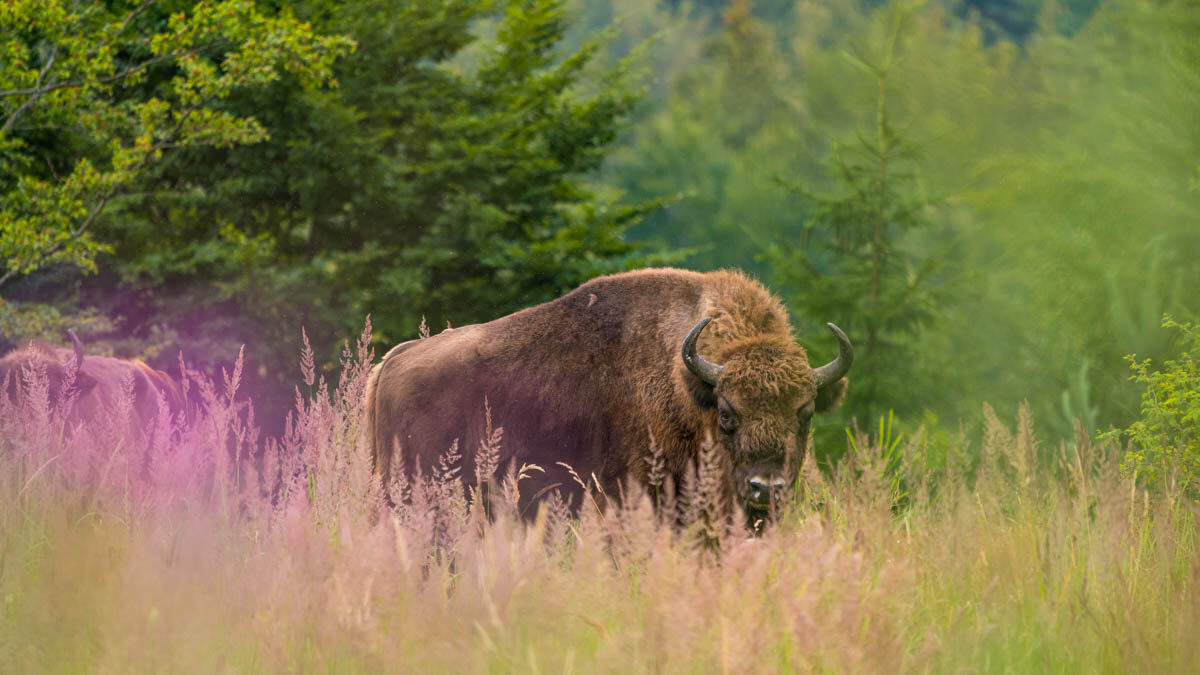
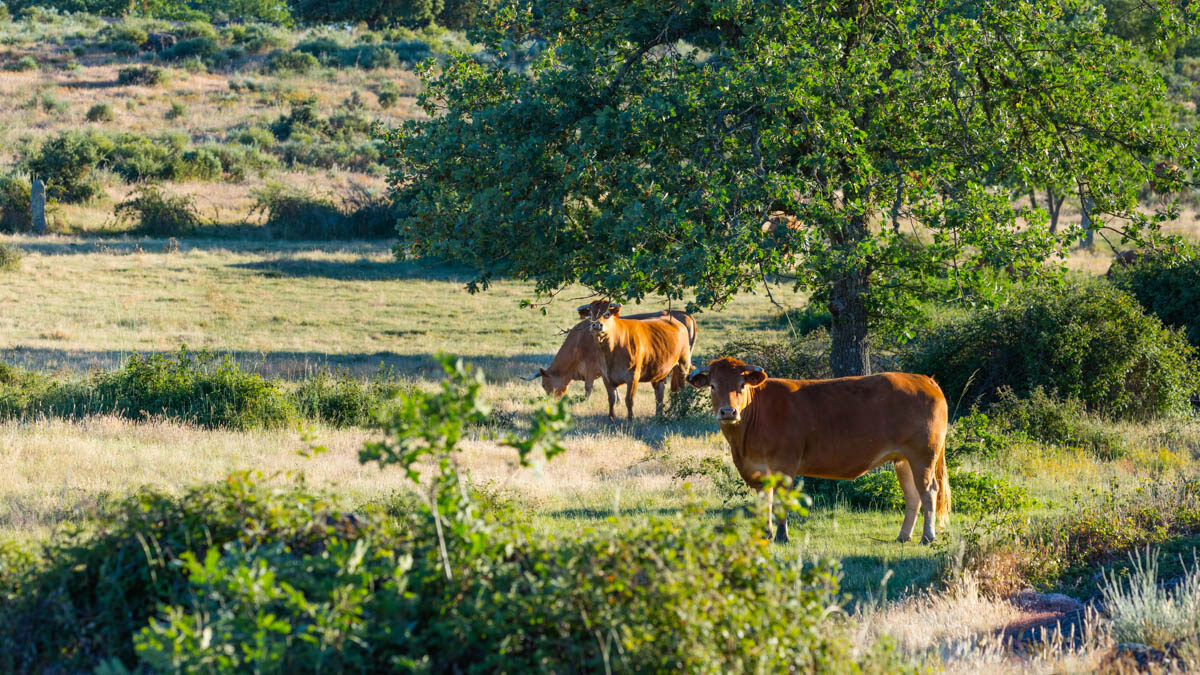
Recent research has shown that large animals have the greatest potential to mitigate climate change at a global scale via three mechanisms:
- changes in fire regime (how often catastrophic wildfire outbreaks occur)
- changes in terrestrial albedo (the ability of the land to reflect sunlight)
- increases in the amount of carbon stored in vegetation and the soil through their grazing and trampling
Large animals can also help ecosystems adapt to climate change by promoting food web complexity, increasing habitat complexity, enhancing plant dispersal, increasing resistance to abrupt ecosystem change, and by modifying climate at a local level. More information about how natural grazing can impact climate change can be found in our fourth impact story.
Rewilding Europe and practical rewilding
Over the last 10 years, Rewilding Europe has demonstrated the beneficial impact of rewilding on climate change across the portfolio of rewilding landscapes where we operate, albeit on a very local level. As wild nature continues to recover in these landscapes, so the scale of this impact is likely to increase.
The table below describes the expected impact of climate change in the landscapes where we operate, how rewilding interventions are contributing to climate change mitigation and adaptation on a local level, and further climate-related interventions which may be carried out in these landscapes going forwards.
Enterprise support
Over the last decade, Rewilding Europe has not only worked to demonstrate the benefits of rewilding on climate through its own practical action, but encouraged and supported other climate positive rewilding initiatives too. We are also partnering with a growing range of businesses who want to invest in nature recovery as a means of addressing climate change and biodiversity decline.
Rewilding Europe Capital (REC) is our pioneering funding facility that provides financial loans to new and existing business that support European rewilding. Over the last decade, REC has provided loans to several rewilding initiatives whose efforts will have an increasingly beneficial climate impact going forwards.
Peatland restoration
Back in 2017, REC provided Snowchange – a Finnish NGO specialising in the restoration and recovery of damaged landscapes – with a 75,000-euro loan to purchase and conserve the 110-hectare Linnunsuo wetland in eastern Finland. The former peat production site is strategically located in the Jukajoki River catchment area and was heavily polluted before it was rewetted in 2013.
Peatlands cover just 3% of the global terrestrial surface, but contain 30% of global soil carbon – twice as much as all the forests on Earth. However, human activity – particularly in Europe – has led to widespread peatland degradation, typically through peat extraction for fuel, and drainage for agriculture and forestry. This has negatively impacted biodiversity and transformed these landscapes from carbon sinks to carbon sources. Degraded peatlands are now responsible for almost 6% of global anthropogenic carbon dioxide emissions.
This initial loan to Snowchange was followed up with a second loan of 200,000 euros at the start of 2019. This was used to purchase an additional 72-hectare piece of land, located next to Linnunsuo, and to scale up peatland and forest rewilding across Finland. By 2022, Snowchange’s Landscape Rewilding Programme, which has now received funding from multiple sources, had expanded across Finland to cover five main river catchment areas. Snowchange currently owns a total of 2800 hectares of recovering peatland and forest, and offers land concessions on over 31,000 hectares, with these figures expected to grow in the years ahead.
“As a nature-based climate solution, peatland has huge potential, both in Finland and other regions in Europe,” says Tero Mustonen, Director of Snowchange. “In Finland alone, degraded peatlands cover more than 5 million hectares, although some of these sites have become forests. Across the European Union there are many more millions of hectares of degraded peatland that could be doing a far better job of absorbing atmospheric carbon if they were rewilded.”
“Across the European Union there are millions of hectares of degraded peatland that could be doing a far better job of absorbing atmospheric carbon if they were rewilded.”

Tero Mustonen
Director of Snowchange
Promoting natural forests
In northern Portugal, a loan from REC has seen a traditional commercial forestry business model turned on its head. Instead of planting trees and waiting for them to grow before harvesting, the Sociedade Agro-Florestal do Rio Maçãs (a Portuguese forestry enterprise) has used the loan, which was disbursed at the start of 2019, to lease mature communal monoculture forest land. This is now being transformed into more natural, mixed species forest, which will lock up more atmospheric carbon, enhance biodiversity and resilience to catastrophic wildfire, and support the development of nature-based tourism.

Sandra Bartocha / Wild Wonders of Europe
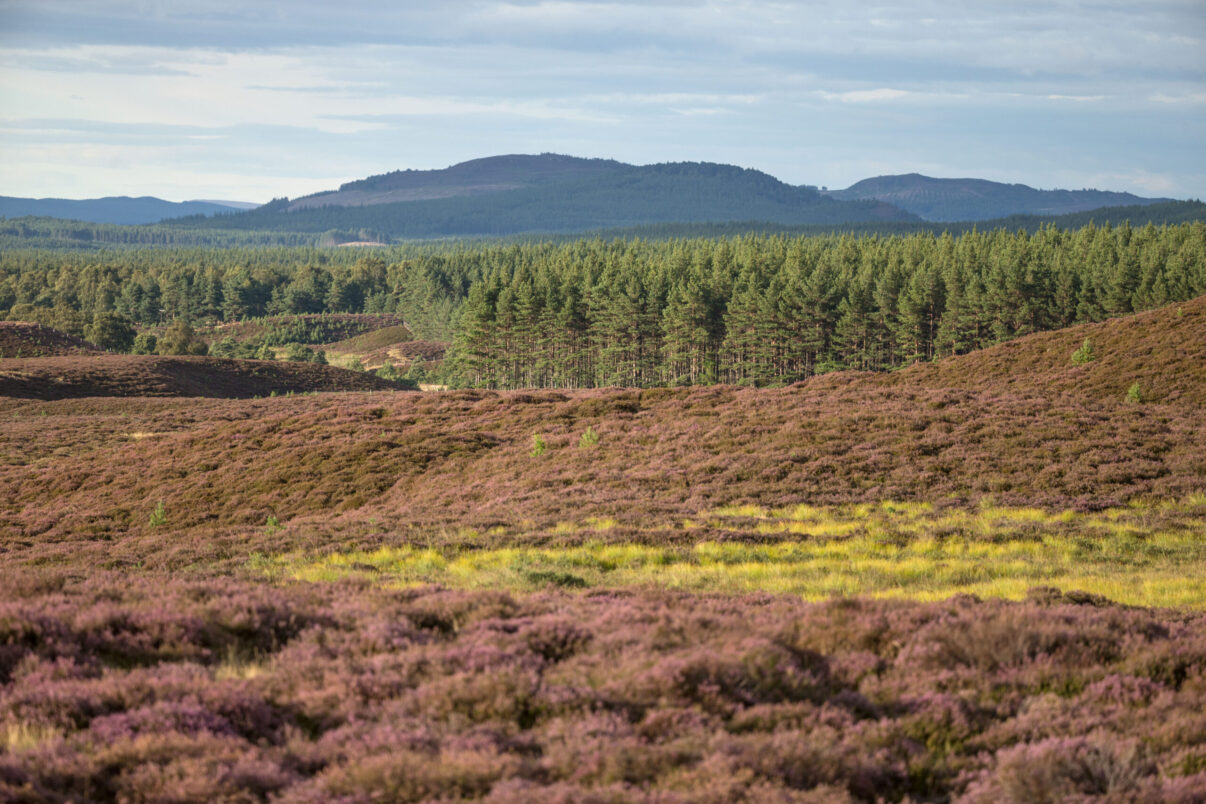
Daniel Allen/ Rewiding Europe
Planting trees (afforestation and reforestation) have been widely touted as an essential strategy to remove greenhouse gases from the atmosphere, with huge sums now being invested. The European Commission, for example, is planning to plant 3 billion trees across the 27 EU Member states by 2030.
Yet planting trees is not a silver bullet against global warming or biodiversity loss. Mass tree planting schemes may sound appealing and ideally suited to marketing campaigns, but are in fact costly, largely irrelevant to addressing the climate and ecological emergencies, and can in some situations actually be counterproductive.
The money spent on tree planting would be better used restoring large-scale ecosystems instead. Studies show that allowing existing natural forests to reach their full ecological potential – a process termed “proforestation” – is a far more effective, immediate, and lower cost nature-based climate solution. It also offers far greater biodiversity benefits.
The money spent on tree planting would be better used restoring large-scale ecosystems instead.
Nature Restoration Policy
Over the last decade Europe’s policy space has evolved significantly with regard to nature recovery. With the launch of the European Green Deal and the upcoming EU Nature Restoration Law, the launch of the UN Decade on Ecosystem Restoration, and the strengthening connection between the biodiversity and climate agendas, rewilding is increasingly recognised and supported as an effective and potentially transformative nature-based solution.
Rewilding Europe has contributed to this evolution with a number of policy documents and initiatives, such as the release of the “Call to Action for a Wilder Europe” and “Putting nature back on the map” in 2020.
12.5x
Restoring, rewilding, and conserving the functional role of animals can be a climate game changer by magnifying carbon uptake by up to 12.5 times (Oswald Schmitz).
10%
By rewilding 10% of European land, around 10% of European emissions could be absorbed and stored.
5x
In Europe, peatland ecosystems store five times more CO2 than forests. Yet damaged peatlands are a significant source of carbon emissions.
€25–50
Rewilding European land results in a “cost per sequestered ton of carbon” of around 25–50 euros, which is far cheaper than most other methods of absorbing and locking up carbon.
Designed right, the EU Nature Restoration Law can be a game-changer, not only for addressing biodiversity decline, but also the climate emergency.
According to a new WWF-commissioned study by the Institute for European Environmental Policy (IEEP), restoring degraded habitats that fall under the EU Habitats Directive could sequester 84 million tonnes of carbon (MtC) – or around 300 million tonnes of carbon dioxide – every year. This is the equivalent to the annual greenhouse gas emissions of Spain, or the combined emissions of the Benelux countries, or the current carbon sequestration by the entire EU land use, land-use change, and forestry (LULUCF) sector.
“This new study demonstrates the huge climate potential of European nature,” says Rewilding Europe Executive Director Frans Schepers. “The question now is, how do we enable nature to recover to realise the benefits? In this regard, rewilding is a far more cost-effective approach than active restoration involving long-term management. We need to let nature lead in its own recovery and restore systems in a way that they can look after themselves.”
“Rewilding is a far more cost-effective approach than active restoration involving long-term management. We need to let nature lead in its own recovery and restore systems in a way that they can look after themselves.”

Frans Schepers
Rewilding Europe Executive Director
The network effect
Today rewilding is gaining momentum as a progressive and effective approach to conservation in Europe. Underpinning this trend, the burgeoning European Rewilding Network (ERN) continues to foster collaboration and amplify results.
Founded by Rewilding Europe in 2013, the aim of the ERN is to enhance the rewilding efforts of each member by facilitating the exchange of skills, insight and experience. Members meet regularly, usually via webinar, while nature-based businesses can also apply to Rewilding Europe Capital.
Enhancing carbon storage
Several ERN members are directly involved in efforts to mitigate the scale and impact of climate change. In 2020, Rewilding Europe entered a partnership with the 511-hectare Bunloit Estate, now operating under the name Highlands Rewilding, which overlooks Loch Ness in the Scottish Highlands. Rewilding Europe is providing rewilding expertise to the estate, while Rewilding Europe Capital invested 75,000 euros in a Bunloit green bond to assist with the estate purchase.
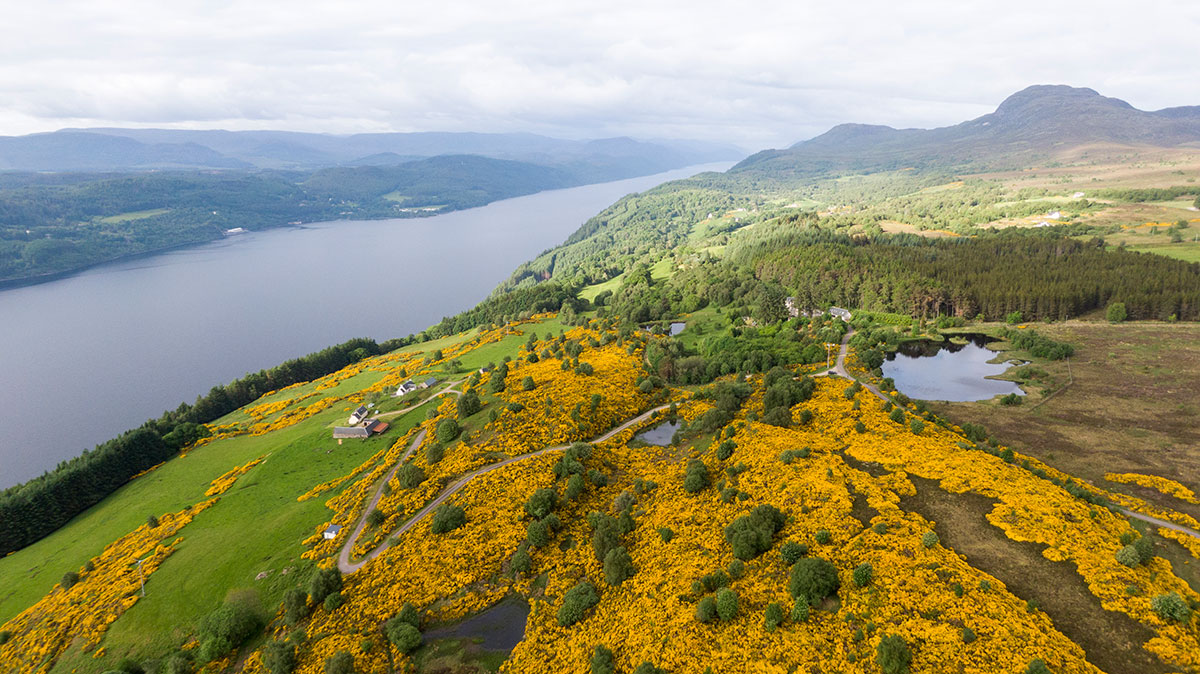
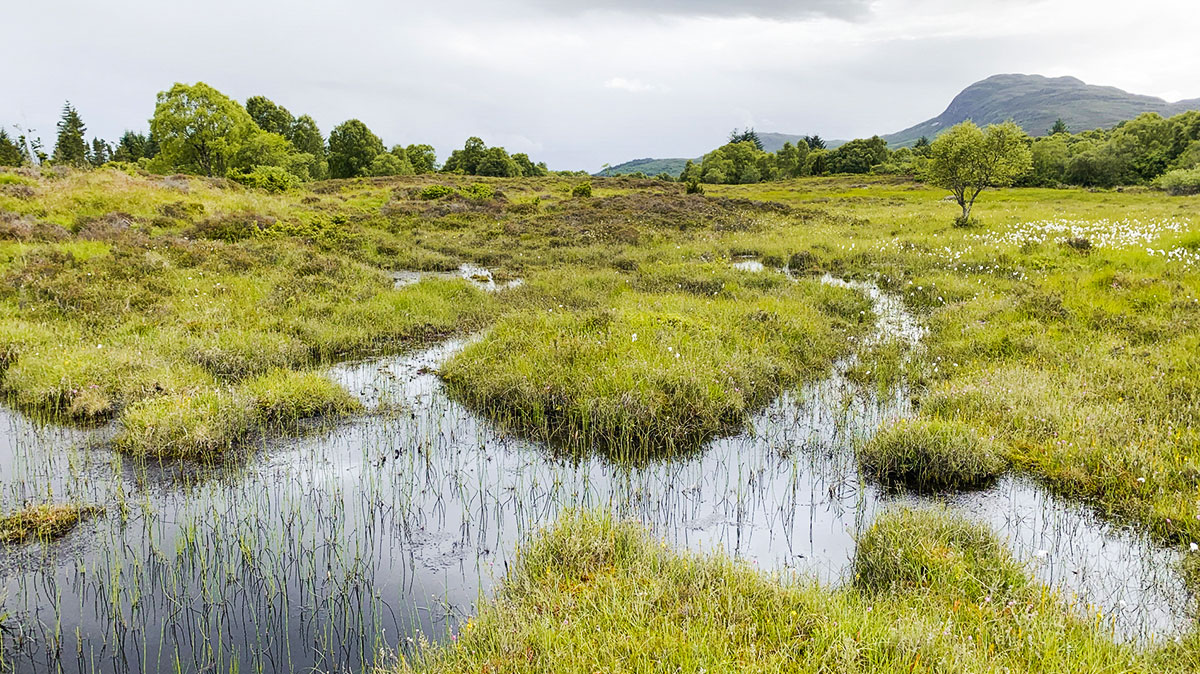
The Highlands Rewilding is currently working to transform the estate from a net carbon source into a net carbon sink through various measures, including peatland restoration and planting broadleaf trees. It also aims to enhance biodiversity, create new green jobs, and generate profit that can be reinvested in further rewilding of the estate.
“The main carbon source on the Bunloit Estate is our extensive area of peatland,” explains Ben Hart, Highlands Rewilding’s Carbon and Biodiversity Accounting Consultant. “This is either open and drying out, or has been planted with non-native conifer plantations, which are also drying out the peat and releasing large amounts of carbon. To address this we have spent the winter removing many of these plantations, and will be working with Peatland Action – who will fund restoration work, including re-wetting – to allow natural processes to take over and restore the peat to a carbon sink.”
Ben Hart believes that Highlands Rewilding’s scalable climate-focused model is imperative if the worst impacts of climate change are to be averted and biodiversity decline reversed.
“We have always aspired to show leadership in this area, with the hope that other landowners will want to follow our journey and decide to make changes to their own operating practices – while recognising that ‘full’ rewilding is not for everyone. We have been happily surprised with the number of other estates getting in touch with us, both in Scotland and further afield.”
“We have always aspired to show leadership in this area, with the hope that other landowners will want to follow our journey and decide to make changes to their own operating practices.”

Ben Hart
Bunloit Rewilding’s Carbon and Biodiversity Accounting Consultant
Boosting climate change adaptation
Rewilding can also make landscapes more resilient and capable of accommodating changes brought on by global warming. Situated on the Dutch-Belgian border, the Border Meuse (or “Grensmaas“) initiative demonstrates perfectly how the restoration of natural landscapes damaged by human exploitation is one of the most effective and cheapest ways of addressing challenges such as climate change and biodiversity decline, while simultaneously providing a wide range of other socio-economic benefits.
The River Meuse has its source on the Plateau de Langres in the Bourgogne region in France, making a 950-kilometre journey northward through France, Belgium and the Netherlands before draining into the North Sea. Over the last 30 years the Border Meuse initiative has restored a 45-kilometre section of the river, which runs along the border between the Netherlands and Belgium. Restoration efforts, which have seen large areas surrounding the river lowered and the river itself broadened, have created a dynamic, braided river landscape that is allowed to flood and shift course naturally.
The Border Meuse initiative has seen river restoration deliver a triple win for nature and people. It demonstrates perfectly how rewilding can make socio-economic as well as ecological sense. The initiative has reduced flood risk, created healthier and more diverse nature, and provided economic benefits in the form of both gravel extraction and nature-based economic development.
The Meuse Valley River Park, which was established in 2006 and is now also a member of the European Rewilding Network, has become an important ecological corridor linking the upstream French and Belgian sections of the river with new rewilding areas further downriver.
Increased flooding is likely to be one of the most serious effects of climate change in Europe over coming decades (river flooding is already the costliest natural disaster in Europe). The Border Meuse initiative proved its worth during serious flooding in Western Europe in July 2021, when dozens of people died and huge economic damage was caused in both Belgium and Germany. Thanks to its broadened river bed, the Border Meuse, which was also heavily swollen, coped with high water levels very well, with no serious casualties in the area and little economic damage.
Let’s fix our climate crisis together
There is now growing recognition that the recovery of wild nature – both on land and in the sea – is essential if we are to effectively tackle climate. The rapid scaling up rewilding can enable us to transition to a world where the sequestration of atmospheric carbon exceeds anthropogenic carbon emissions and keep global warming to an absolute minimum.
Rewilding is about co-creating a wilder, better, nature positive future. A future where ecosystems are healthier and wildlife populations far more abundant, where our climate is stable, and where we all enjoy the benefits that nature provides. As Rewilding Europe works to make this vision a reality, we invite companies, organisations, institutions, foundations and individuals to join us. By supporting rewilding you can help to address climate change and biodiversity decline at the same time, and make the world more prosperous and liveable for all.
The corporate connection
Funding for rewilding is on the rise as more and more businesses, investment institutions and philanthropic foundations take financial decisions that help to restore nature in a holistic way. The private sector now has a unique opportunity to redesign its relationship with nature by investing in nature recovery at large scale. By adopting rewilding, businesses can build on their existing efforts to address climate change, ensuring their operations have a positive impact on nature, climate and people. This means going beyond a narrow focus on emissions, or carbon, or tree planting, or renewable energy.
A partnership between Rewilding Europe and UK-based adventure travel company Exodus Travels, for example, is already bearing fruit in the Central Apennines rewilding area in Italy. Exodus is funding a “Nature and Carbon Corridors” initiative, through which they aim to rewild a minimum of 100 m2 of wildlife corridor land for every client that books a trip with the company.
“There is a growing awareness in the corporate sector that the climate and ecological emergencies are inextricably linked,” says Kasia Morgan, Head of Sustainability and Community at Exodus. “At Exodus we really wanted to develop a climate action plan that focused on more than just mitigating our negative impacts, and which proactively supported the restoration of nature that we all depend on. This led us to rewilding and Rewilding Europe.”
“There is a growing awareness in the corporate sector that the climate and ecological emergencies are inextricably linked.”

Kasia Morgan
Head of Sustainability and Community at Exodus
Rewilding credit development
One of the ways that the scaling up of rewilding could be financed is by providing investment opportunities to organisations that want to help address the climate emergency, as well as support nature recovery and biodiversity enhancement.
The Rewilding Europe enterprise team – together with a wide range of partners – are currently in the early stages of developing rewilding credits. The Affric Highlands will act as a main pilot area for the development of such credits, with other pilot areas likely to include the Central Apennines, Greater Côa Valley, Swedish Lapland and Oder Delta rewilding landscapes.
While the overall concept is similar to some carbon credit schemes, rewilding credits would differ in that its primary focus is to facilitate the restoration of natural habitats in line with rewilding principles. In addition to facilitating higher levels of carbon capture, such restoration would generate a range of other co-benefits, such as increased biodiversity, clean air, and better health and wellbeing in rural communities.
Young rewilders
Today, rewilding is also resonating ever more strongly with the younger generation, who recognise that nature and biodiversity are essential for addressing climate change and the guarantee of a healthy and sustainable future. In 2019, young people rose up in their hundreds of thousands to demand greater action to address global warming, with more and more joining the climate change movement every year.
“We are the generation that doesn’t know how life is without climate change,” says Aleksandrina Mitseva, who became Rewilding Europe’s young Supervisory Board member in 2019, and also co-created the European Young Rewilders. “Rewilding engages and inspires young people who are concerned about climate because it is an actual solution. It brings them hope.”

